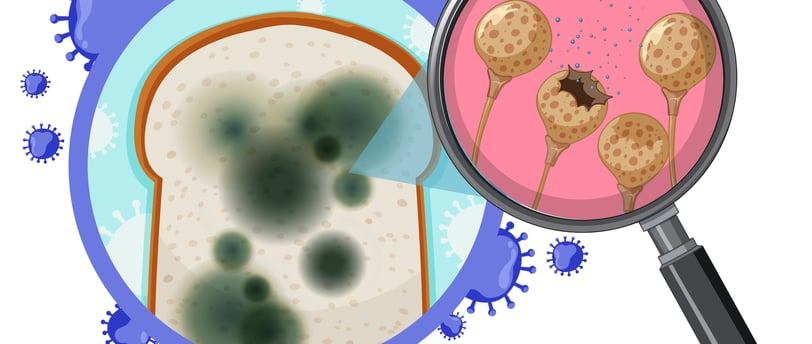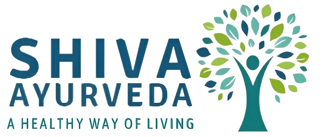Home Remedies for Yeast Infection
Yeast infections, also known as candidiasis, are a common type of fungal infection caused by the overgrowth of the Candida yeast. According to the Centers for Disease Control and Prevention (CDC), an estimated 75% of all women will experience at least one yeast infection in their lifetime.
Arjun Singh
10/11/20246 min read


Home Remedies for Yeast Infection
Yeast infections, also known as candidiasis, are a common type of fungal infection caused by the overgrowth of the Candida yeast. According to the Centers for Disease Control and Prevention (CDC), an estimated 75% of all women will experience at least one yeast infection in their lifetime. Symptoms of yeast infections include itching, burning, and redness in the vaginal area, as well as a thick, white discharge. Yeast infections are usually treated with over-the-counter or prescription antifungal medications. In this blog, we are going to discuss a few home remedies for yeast infection, follow these remedies rigorously and treat yeast infection at home.
What is yeast infection?
Yeast infection, also known as candidiasis, is a common fungal infection that affects both men and women. It is caused by an overgrowth of the fungus Candida albicans, which is naturally present in the body. Yeast infections can occur in various parts of the body, including the vagina, mouth, and skin. In this article, we will discuss the causes, symptoms, triggers, consequences, and treatment options for yeast infections, including both natural remedies and Ayurvedic home remedies.
Causes of Yeast Infection:
Yeast infections are caused by an overgrowth of the Candida albicans fungus. This overgrowth can occur due to a variety of factors, including:
Antibiotic use, which disrupts the balance of bacteria in the body and allows the Candida fungus to grow unchecked.
Hormonal changes, such as those that occur during pregnancy or menopause.
Diabetes, which can cause an increase in sugar levels in the body, making it easier for the Candida fungus to thrive.
A weakened immune system, which can occur due to conditions such as HIV or cancer.
Certain medications, such as corticosteroids or birth control pills
Wearing tight clothing or underwear made from synthetic materials.
Symptoms of Yeast Infection:
The symptoms of yeast infections vary depending on the location of the infection. Common symptoms include:
Vaginal yeast infection: Itching, burning, and redness in the vaginal area, as well as thick white discharge.
Oral yeast infection (thrush): White patches on the tongue, cheeks, and roof of the mouth, as well as soreness and difficulty swallowing.
Skin yeast infection: Red, itchy, and scaly rash, usually in the folds of the skin such as the armpits, groin, and under the breasts.
Triggers of Yeast Infection:
Certain triggers can increase the risk of developing a yeast infection. These include:
Eating a diet high in sugar and refined carbohydrates, which can feed the growth of the Candida fungus.
Stress, which can weaken the immune system and make it more susceptible to infection.
Antibiotic use, which can disrupt the balance of bacteria in the body and allow the Candida fungus to grow unchecked.
Hormonal changes, such as those that occur during pregnancy or menopause.
Consequences of Yeast Infection:
If left untreated, yeast infections can lead to serious complications, such as:
Recurrent yeast infections, which can be difficult to treat and may require long-term therapy.
Spread of the infection to other parts of the body, such as the bloodstream or urinary tract.
Development of chronic health conditions, such as diabetes or HIV.
How long does yeast infection last?
The length of time a yeast infection lasts depends on the severity of the infection and the treatment used. Mild yeast infections may clear up in as little as a few days, while more severe infections can take up to two weeks or more to clear.
Tips to reduce yeast infection:
Wear loose-fitting clothing and underwear made from natural fibers, such as cotton.
Avoid tight-fitting clothing and synthetic materials, which can trap moisture and create a warm and humid environment that is conducive to the growth of the Candida fungus.
Eat a diet low in sugar and refined carbohydrates and high in fruits, vegetables, and probiotics.
Avoid using scented soaps and bubble baths, which can disrupt the balance of bacteria in the vaginal area.
Practice good hygiene, including regular bathing and washing the vaginal area with mild soap and water.
Avoid using douches or powders in the vaginal area.
Keep the vaginal area clean and dry, especially after showering or bathing.
Practice safe sex and use condoms to reduce the risk of contracting a yeast infection from a sexual partner.
Dos and Don’ts for yeast infection:
Do see a doctor if you suspect you have a yeast infection, as they can prescribe antifungal medication to treat the infection.
Do practice good hygiene, including regular bathing and washing the vaginal area with mild soap and water.
Do wear loose-fitting clothing and underwear made from natural fibers, such as cotton.
Do eat a diet low in sugar and refined carbohydrates and high in fruits, vegetables, and probiotics.
Don’t use scented soaps and bubble baths, which can disrupt the balance of bacteria in the vaginal area.
Don’t use douches or powders in the vaginal area.
Don’t have sex until the infection has cleared up.
10 best natural remedies for yeast infection
Home remedy for yeast infection with Garlic:
Garlic contains antifungal properties that can help to fight off yeast infections. You can consume garlic in your diet or apply it directly to the affected area.
Home remedy for yeast infection with Yogurt:
Yogurt contains probiotics, which can help to restore the balance of bacteria in the body and prevent the overgrowth of the Candida fungus. You can consume yogurt or apply it directly to the affected area.
Home remedy for yeast infection with Tea tree oil:
Tea tree oil has antifungal properties that can help to fight off yeast infections. You can apply it directly to the affected area or add it to your bathwater.
Home remedy for yeast infection with Apple cider vinegar:
Apple cider vinegar can help to restore the acidity of the vaginal area, which can prevent the growth of the Candida fungus. You can add it to your bathwater or apply it directly to the affected area.
Home remedy for yeast infection with Oregano oil:
Oregano oil has antifungal properties that can help to fight off yeast infections. You can consume it in supplement form or apply it directly to the affected area.
Home remedy for yeast infection with Coconut oil:
Coconut oil has antifungal properties that can help to fight off yeast infections. You can apply it directly to the affected area or use it as a lubricant during sex.
Home remedy for yeast infection with Olive leaf extract:
Olive leaf extract has antifungal properties that can help to fight off yeast infections. You can consume it in supplement form or apply it directly to the affected area.
Home remedy for yeast infection with Calendula:
Calendula has anti-inflammatory and antifungal properties that can help to soothe the symptoms of yeast infections. You can use calendula cream or ointment on the affected area.
Home remedy for yeast infection with Goldenseal:
Goldenseal has antifungal properties that can help to fight off yeast infections. You can consume it in supplement form or apply it directly to the affected area.
Home remedy for yeast infection with Boric acid:
Boric acid is an antifungal agent that can help to fight off yeast infections. You can use boric acid suppositories, but it should be used under medical supervision.
5 best Ayurvedic home remedies for yeast infection:
Home remedy for yeast infection with Neem:
Neem has antifungal properties that can help to fight off yeast infections. You can consume neem capsules or apply neem oil directly to the affected area.
Home remedy for yeast infection with Turmeric:
Turmeric has anti-inflammatory and antifungal properties that can help to fight off yeast infections. You can consume turmeric in your diet or apply a turmeric paste directly to the affected area.
Home remedy for yeast infection with Guggulu:
Guggulu is an Ayurvedic herb that has anti-inflammatory and antifungal properties that can help to fight off yeast infections. You can take guggulu supplements or apply a guggulu ointment to the affected area.
Home remedy for yeast infection with Triphala:
Triphala is a blend of three fruits that has antifungal properties that can help to fight off yeast infections. You can consume triphala capsules or make a triphala tea to drink.
Home remedy for yeast infection with Vidanga:
Vidanga is an Ayurvedic herb that has antifungal properties that can help to fight off yeast infections. You can consume vidanga capsules or make a vidanga tea to drink.
Home Remedies for yeast infection with baking soda -
One home remedy for yeast infections is to mix baking soda with water to create a paste and apply it to the affected area.
Another Second home remedy for yeast infections is to add a cup of baking soda to a warm bath and soak in it for 15-20 minutes.
It's important to note that while these natural and Ayurvedic remedies may help to alleviate symptoms and reduce the risk of yeast infections, it's always best to consult with a healthcare provider for proper diagnosis and treatment. Additionally, it's important to maintain a healthy lifestyle, including a balanced diet, regular exercise, and stress management techniques, to help prevent the overgrowth of the Candida fungus and reduce the risk of yeast infections.
Contacts
Subscribe to our newsletter
9718088058
Quick Links
Cancellation Policy
General Terms & Policy
Return/Refund Policy
Shipping Policy
Shop Online
Disclaimer
About Us
Blogs
Contact us
FAQ
Privacy Policy
